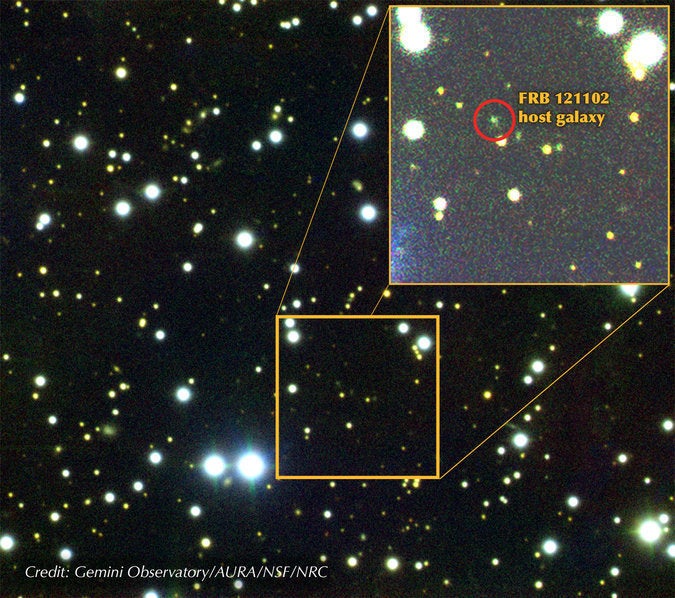Thrilled scientists have finally traced the deep space source of mysterious bursts of powerful radio signals to an intriguing dwarf galaxy more than 3 billion light-years from Earth.
“Now our objective is to figure out why that happens,” said one of the scientists, Casey Law of the University of California, Berkeley.
The bursts, lasting just milliseconds, can generate as much power as 500 million suns, noted Science Alert.
Astronomers have detected similar signals (fast radio bursts, or FRBs) since 2007 and estimate that thousands of the signals shoot across the universe each day. Discovery of the dwarf galaxy’s signals, first detected a year ago, is groundbreaking because the bursts have repeated from the same location — and long enough to be tracked.
“We are the first to show that this is a cosmological phenomenon. It’s not something in our backyard. And we are the first to see where this thing is happening, in this little galaxy, which I think is a surprise,” said Law.

Astronomers initially detected the radio bursts coming from a single region far beyond the Milky Way in 2012 and labeled the emissions FRB 121102. After 83 hours over six months last year using the Very Large Array (VLA) telescope in New Mexico, astronomers detected nine more bursts from the same location and pointed the powerful Gemini optical telescope in Hawaii as well as a network of European radio telescopes at the region. That’s when FRB 121102 erupted again, several times, allowing scientists to pinpoint the source.
Besides detecting the powerful FRBs, the team also observed an ongoing, persistent source of weaker radio emission in the same region.
“We think that the bursts and the continuous source are likely to be either the same object or that they are somehow physically associated with each other,” said scientist Benito Marcote of the Joint Institute for VLBI in the Netherlands.
The astronomers believe the pulse sources may be neutron stars — dense objects that form after a star collapses and emit radio pulses as they spin.
The team also speculates that the pulse could be produced by highly magnetic magnetars, a kind of neutron star surrounded by material ejected by a supernova explosion — or may be the death pulses of a black hole.
Some astronomers even speculated that the fast radio bursts were being broadcast by aliens. But an initially noted mathematical pattern became increasingly muddled as astronomers gathered more data.
Whatever the final determination, the discovery could provide an important new window into the early universe and clues to other mysteries of the cosmos.
“There used to be an expression, ‘as unchanging as the heavens,’” Cornell University team scientist Shami Chaterjee told National Geographic. “But the heavens are changing very fast. The sky is just boiling and seething with these incredibly powerful events that we don’t really understand.”
The milestone discovery was presented Wednesday at a conference of the American Astronomical Society in Texas and also published in papers in Nature and the Astrophysical Journal Letters.
